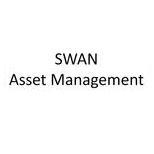In mid-September, the US Federal Reserve announced it would begin purchasing $40 billion of mortgage-backed securities each month as an extension of their quantitative easing program (“QE3”) to inject liquidity into the economy. Of more significance, quantitative easing would be continued indefinitely until the Fed was satisfied with the level of unemployment.
It also said the current extraordinarily low interest rate policy would be extended into 2015. These interest rate and quantitative easing policies began as unconventional responses to a financial crisis. Even though the crisis has passed, the unconventional has become conventional, if not sacred, with quantitative easing, forever and ever, amen.
These policies have crushed returns that savers can earn on their bank deposits and money market funds. As of June 30, the Fed reported there were roughly $8 trillion of household savings. Normally, the most liquid investments at least compensate for inflation. If not for the Fed’s zero interest rate policy, we believe savers would probably be earning about 2% on their risk-free investments.
That return would amount to approximately $160 billion of lost income each year. The ostensible explanation for this financial repression is that it will help the economy rebound and support job growth. Asset prices should rise because of low rates and create a wealth effect that stimulates the economy. After five years, there is little evidence of success. The so-called wealth effect seems to have been offset by lost income on savings.
So, why would the Fed continue these unsuccessful and inequitable policies? Since the Fed has become the largest holder of Treasury bonds, it appears the real objective is to continue printing money to fund ongoing federal deficits and keep interest rates at artificially low levels. If this perspective is correct, we expect the Fed will announce in December that it will keep buying $45 billion of Treasury bonds each month when Operation Twist concludes at the end of this year. The problem is that the Fed has trapped itself in a policy which can never end. Once it quits buying bonds through quantitative easing, or starts selling, rates could escalate rapidly.
Neither the bond market nor the stock market improved its performance since QE3 began. The markets may have anticipated the limits of the Fed’s “unconventional” policies and may have begun to price a conclusion to those decisions. Blind faith in the Fed may be coming to an end. If Fed intervention loses its impact, bonds may prove unappealing while stocks and hedged positions may offer the best chance for preserving capital.
Certain information contained in this presentation is based upon forward-looking statements, information and opinions, including descriptions of anticipated market changes and expectations of future activity. The manager believes that such statements, information and opinions are based upon reasonable estimates and assumptions. However, forward-looking statements, information and opinions are inherently uncertain and actual events or results may differ materially from those reflected in the forward-looking statements. Therefore, undue reliance should not be placed on such forward-looking statements, information and opinions.



